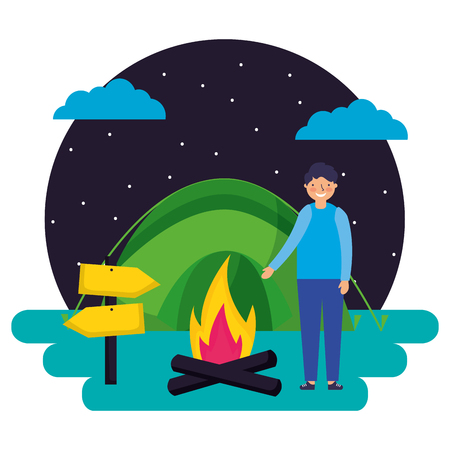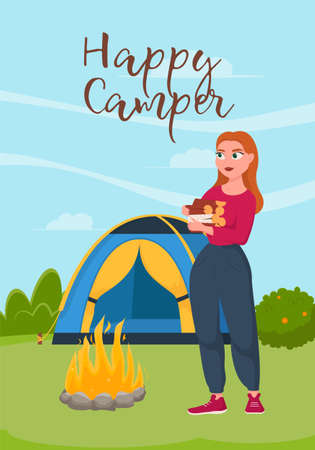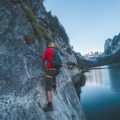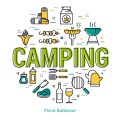Choosing the Right Campsite in Zion
If youre planning your first camping trip to Zion National Park, picking the perfect campsite can set the tone for your entire adventure. Zion offers a variety of campgrounds both within park boundaries and just outside its gates, each with a unique vibe and amenities tailored to different types of campers.
Campgrounds Inside Zion National Park
The main options for camping inside the park are Watchman Campground, South Campground, and the more primitive Lava Point Campground. For first-timers and families, Watchman Campground is usually the top choice—it’s open year-round, located near the South Entrance, and provides easy access to the park shuttle, visitor center, and iconic trails. Sites here have electric hookups and some even boast beautiful views of Zion’s dramatic cliffs.
South Campground: Close to Action
South Campground is another popular pick, especially during peak season (March through October). It’s a bit more rustic than Watchman but still offers proximity to Springdale’s shops and restaurants. This spot is great for those who want to be close to all the action but don’t mind fewer amenities.
Lava Point Campground: For Solitude Seekers
If you’re craving quiet nights under the stars away from crowds, head up to Lava Point Campground. Located about an hour from Zion Canyon on Kolob Terrace Road, it’s only open late spring through fall due to snow. With just six sites and no water or electricity, it’s ideal for experienced campers looking for solitude and panoramic views.
Campgrounds Near Zion National Park
If in-park sites are booked or you want extra amenities like showers or swimming pools, several private campgrounds and RV parks in Springdale, Virgin, and Hurricane offer excellent alternatives. These are especially family-friendly, with playgrounds, pools, and easy access to grocery stores. For those who love glamping or want a luxurious camping experience, look into canvas tents or cabin rentals just outside the park.
No matter your style—whether you’re introducing your kids to s’mores by the campfire or seeking a peaceful escape in nature—Zion has a campsite that fits your vision of the perfect outdoor getaway.
2. Securing Permits and Reservations
If you’re dreaming of waking up to the red cliffs of Zion, nailing down your permits and reservations is step one. Zion National Park’s popularity means campsites and trail permits—especially for bucket-list hikes like Angels Landing—book up fast. Here’s a streamlined guide to help you navigate the process like a pro:
Camping Permits & Reservations
There are three main campgrounds within the park: Watchman, South, and Lava Point. Advanced reservations are essential during peak season (March through November). Walk-up sites fill up by early morning, so plan ahead!
| Campground | Reservation Required? | Booking Window | Notes |
|---|---|---|---|
| Watchman | Yes | 6 months in advance | Main campground, close to entrance |
| South | No (first-come, first-served) | N/A | Arrive early; fills up fast in peak season |
| Lava Point | Yes (seasonal) | Up to 6 months in advance | 1-hour drive from Zion Canyon Visitor Center; only primitive sites available |
How to Reserve:
- Go to recreation.gov.
- Select your preferred campground and dates.
- Create an account and book as soon as slots open.
- If your dates are flexible, use the “Flexible Dates” tool to increase your chances.
Backcountry Camping Permits
If you’re craving solitude and adventure off the beaten path, a backcountry permit is a must. These are required for overnight backpacking trips—including The Narrows Top-Down and other wilderness routes.
Step-by-Step: Backcountry Permit Process
- Check Availability: Visit the Zion Wilderness Reservation System.
- Select Your Route: Review map details and trip descriptions carefully.
- Create an Account: Register online for easy access to reservation options.
- Apply Early: Lottery opens 2 months before your trip date; some walk-in permits are available but not guaranteed.
- Confirm & Pay: Once approved, pay fees online and print your permit or save it digitally.
The Famous Angels Landing Permit Lottery
The iconic Angels Landing hike now requires a permit due to its extreme popularity and narrow, exposed route. Don’t miss your shot at this epic experience—here’s how it works:
| Permit Type | How to Apply | When to Apply |
|---|---|---|
| Seasonal Lottery | Zion National Park website lottery system | 2-6 months prior to hike date (dates vary by season) |
| Day-before Lottery | Zion National Park website lottery system | Noon to 3 p.m. MT, one day before desired hike date |
TIPS FOR SUCCESSFUL PERMIT PLANNING:
- Be Flexible: If possible, have backup dates or trails in mind.
- Check Updates: Permit procedures can change—always review the official NPS site for Zion permits and reservations.
- Email Confirmations: Always save and screenshot your confirmation emails—Wi-Fi is limited once you’re in the canyon!
- Packing Essentials: For permitted hikes like Angels Landing, bring plenty of water, sturdy footwear, sun protection, and snacks—you’ll thank yourself later.
- No Permit? No Problem: Many stunning trails don’t require permits! Consider Emerald Pools, West Rim Trail, or Watchman Trail for epic scenery without the paperwork.
Tackling Zion’s permit system might seem daunting at first glance, but with these steps and tips you’ll be ready to secure your spot under those legendary sandstone cliffs—and make memories that last a lifetime.

3. Must-See Trails and Hidden Gems
Iconic Hikes You Can’t Miss
Zion National Park is famous for its jaw-dropping landscapes and legendary hikes. If you’re a first-time visitor, don’t miss The Narrows, where you’ll wade through the Virgin River flanked by soaring sandstone walls. For the more adventurous, Angels Landing offers heart-pounding switchbacks and panoramic views — just be sure to secure a permit in advance, as access is now limited for safety. Both hikes are bucket-list experiences, but require preparation and sturdy footwear.
Lesser-Known Trails Worth Exploring
If you prefer to venture off the beaten path, Zion offers plenty of quieter gems. The Canyon Overlook Trail is short but rewards you with stunning vistas without the crowds. East Rim Trail provides solitude, wildflowers in spring, and dramatic overlooks. For families or those seeking an easy stroll, Pa’rus Trail is perfect for biking or walking alongside the river, with accessible paths and great wildlife spotting opportunities.
Tailoring Your Adventure: Skill Levels & Interests
No matter your fitness level or sense of adventure, Zion has something for everyone. Beginners or families might opt for the Riverside Walk, while intermediate hikers can challenge themselves on Observation Point. Photographers will love golden hour at Court of the Patriarchs, while birdwatchers should keep an eye out along the lush Emerald Pools Trail. Always check trail conditions and weather forecasts before heading out, and remember that summer heat can be intense—early starts are your best friend.
Pro Tip:
Mix up your itinerary by combining iconic trails with lesser-known routes. This way, you experience Zion’s signature sights while also savoring its peaceful side. And don’t forget your camera—the light and color in Zion shift magically throughout the day!
4. Packing for Comfort and Adventure
Packing smart is key to making your Zion National Park camping experience comfortable, safe, and memorable. Zion’s landscape is as diverse as it is stunning, with dramatic temperature swings and unique terrain that demand thoughtful preparation. Here’s a practical checklist and local insights to help you pack like a pro.
Essential Camping Checklist
| Category | Must-Haves |
|---|---|
| Sleeping Gear | Four-season tent, sleeping bag (rated for 20°F or lower), insulated sleeping pad, pillow |
| Clothing | Moisture-wicking base layers, fleece or down jacket, rain shell, quick-dry pants/shorts, hat, gloves, wool socks |
| Cooking & Food | Portable stove, fuel, lighter/matches, reusable utensils and dishes, food storage (bear-proof container recommended), water bottles/hydration system, high-energy snacks |
| Hiking Gear | Daypack, trekking poles (for The Narrows or Angels Landing), trail map/GPS, headlamp with extra batteries |
| Health & Safety | Sunscreen, first aid kit, insect repellent, personal medications, multi-tool/knife |
| Extras | Camp chairs, lightweight tarp or mat, binoculars, camera (for those epic views!) |
Weather Wisdom: Layer Like a Local
Zion’s high desert climate means sunny days can quickly turn into chilly nights—sometimes with a 30-degree difference! Dress in layers so you can easily adapt. Pack a warm beanie and insulated jacket even in summer; spring and fall nights can be surprisingly cold. Rain gear is a must from late summer through fall when monsoon storms roll in.
Zion-Specific Tips for Gear and Comfort
- Footwear: Durable hiking boots with good ankle support are essential for rocky trails and river crossings.
- Trekking Poles: Especially helpful for The Narrows hike where you’ll wade through water over slippery stones.
- Dry Bags: Keep electronics and clothes dry on water hikes or during sudden rainstorms.
- Water Filtration: Zion’s backcountry requires you to filter river or stream water—bring a reliable filter or purification tablets.
- Campsite Lighting: Lanterns or string lights create a cozy vibe after dark.
- Pest Protection: Mosquitoes aren’t common but can show up near water in warmer months—pack repellent just in case.
The Bottom Line: Be Prepared for Zion’s Wild Beauty
Packing thoughtfully means less stress and more time to soak up Zion’s awe-inspiring scenery. Double-check your list before hitting the road—you’ll thank yourself when you’re warm by the campfire under a sky full of stars.
5. Leave No Trace and Park Etiquette
When planning your Zion National Park camping adventure, respecting the park’s natural beauty is just as important as mapping out trails and securing permits. Practicing Leave No Trace principles ensures that Zion remains pristine for future generations and helps protect its unique wildlife and landscapes. Here’s how you can do your part:
Stick to Marked Trails
Always stay on designated trails and campsites, even if it means taking a longer route. Wandering off-trail can cause soil erosion and damage fragile plant life unique to Zion’s ecosystem.
Pack Out What You Pack In
Bring reusable containers and trash bags to pack out all waste—including food scraps, wrappers, and hygiene products. Never leave garbage behind, even in fire rings or restrooms.
Respect Wildlife
Observe animals from a safe distance and never feed them. Human food disrupts their natural diets and can make them dependent on handouts, harming both animals and visitors.
Keep Noise Down
Zion is a place of natural tranquility. Keep voices, music, and other noises to a minimum so everyone can enjoy the peaceful soundscape—and remember, quiet hours in campgrounds are strictly enforced.
Campfire Safety
Use only designated fire rings for campfires, check current fire regulations, and fully extinguish fires before leaving your site. Wildfires are a real risk in the Southwest’s dry climate.
Be Courteous to Other Visitors
Yield to uphill hikers, step aside for horseback riders, and greet fellow adventurers with a smile. Sharing the park respectfully makes the experience better for everyone.
Your Choices Matter
Zion’s breathtaking scenery depends on collective stewardship. By following these Leave No Trace practices and park etiquette guidelines, you’ll help preserve the magic of Zion—so each camper after you can have an equally unforgettable experience.
6. Local Flavor: Food, Supplies, and Small-Town Charm
After a day exploring Zion’s awe-inspiring trails, it’s time to refuel and soak up the local culture. Springdale, the charming gateway town just outside Zion National Park’s main entrance, makes it easy to find everything you need for a seamless camping experience—plus a few treats to make your trip even more memorable.
Groceries and Supplies
If you need to restock on trail snacks or grab last-minute camping essentials, head to Sol Foods Supermarket in Springdale. This well-stocked local grocery store carries fresh produce, organic goods, outdoor gear, and even prepared foods—perfect for both campfire cooking and quick picnics. For more specialized outdoor equipment or forgotten gear, check out Zion Outfitter near the park entrance.
Fuel Up Before You Hit the Road
There are a couple of gas stations along Zion Park Boulevard in Springdale—handy for topping off your tank before heading deeper into southern Utah or making the drive home. If you’re renting an RV or driving a larger vehicle, be sure to fill up here as options become limited once you leave town.
Taste of Springdale: Where to Eat After Your Adventure
Nothing beats unwinding with a delicious meal after a day on the trails. Springdale is home to a surprisingly diverse food scene for such a small town. Try Café Soleil for healthy breakfast burritos and fresh coffee, or treat yourself to wood-fired pizza at Pizza & Noodle Co.. For something truly local, enjoy regional fare and craft brews at Zion Canyon Brew Pub, where you can swap stories with fellow adventurers on the patio overlooking the red rocks.
Local Tip:
The vibe in Springdale is laid-back and welcoming—don’t be shy about asking locals for their favorite spots! Many shops offer souvenirs crafted by artists from southern Utah, so take time to browse and bring home a unique memento from your Zion adventure.


